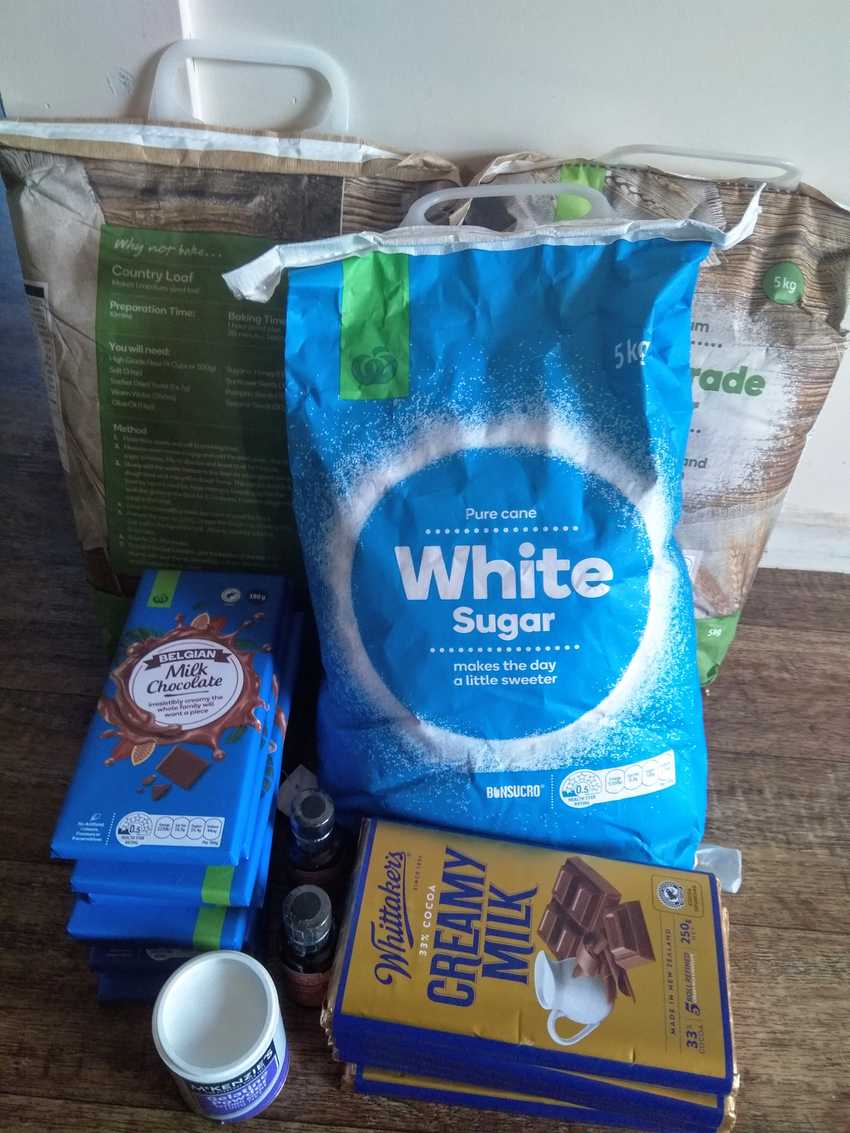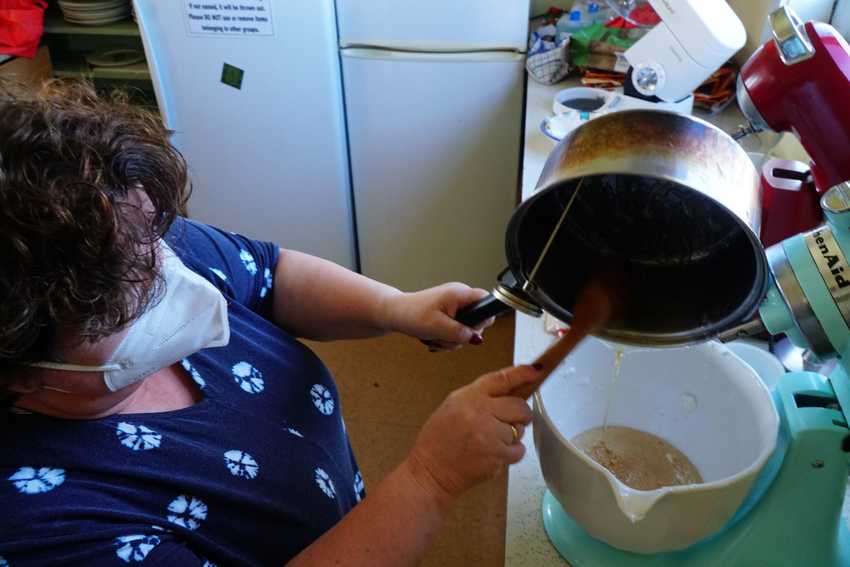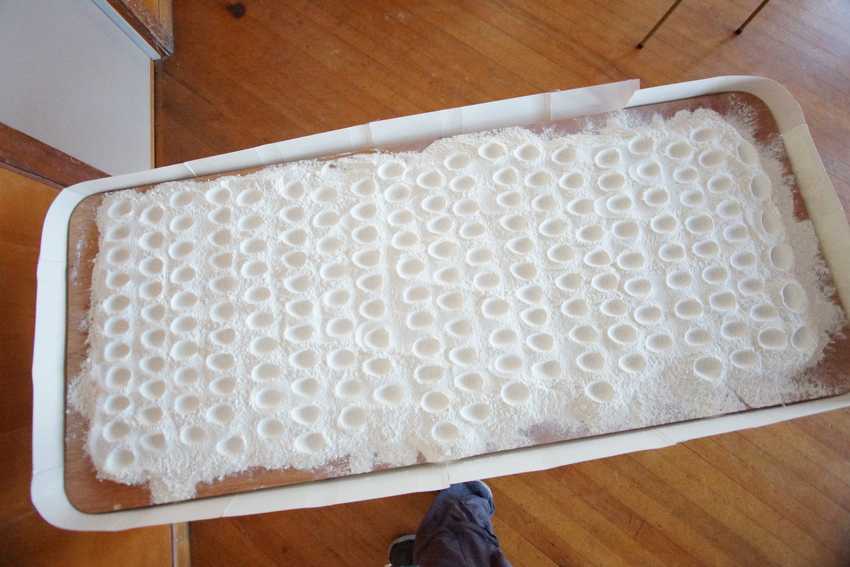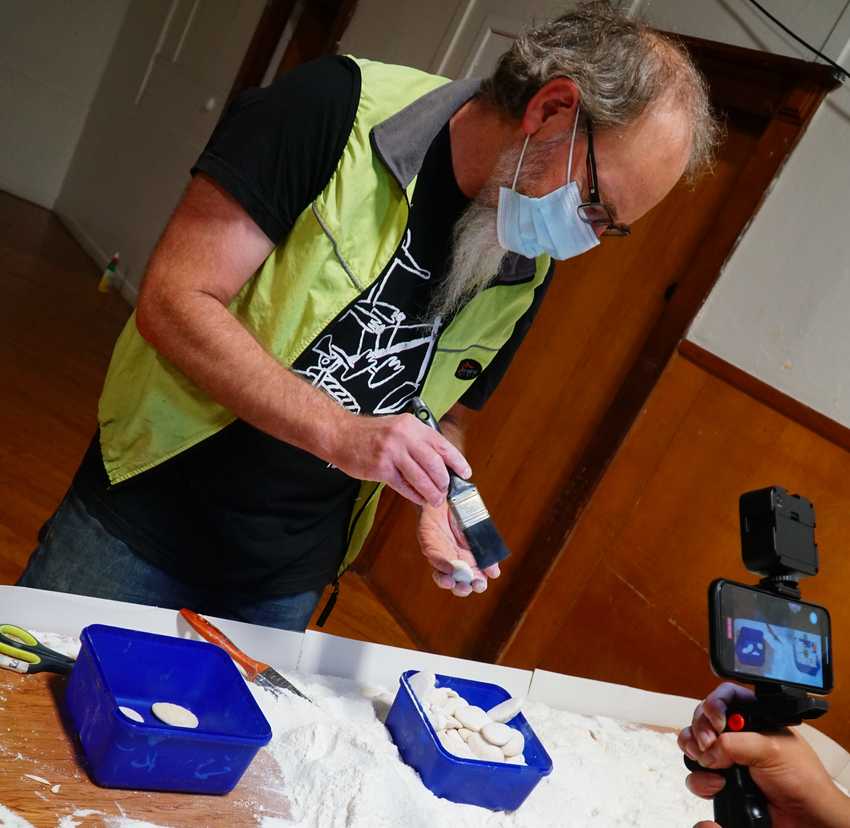Are you part of a group - maybe a church, a scout group or even a class at school? And would you like your group to know more about child labour and forced labour in the food industry? Here’s something fun you could do this Easter which will create opportunities to talk about those issues: make chocolate marshmallow Easter eggs!
Click through to the guide, or read on to learn a bit more about the issues you might talk about first. This has also been written up as a guide to be used by Catholic churches, and that’s available as a pdf.
Talking points
Child labour is a big issue in the cocoa industry. The latest really reliable data we have is from 2017, when it was found that around 2 million children were involved in cocoa production. They’re mostly aged 12 and up, but some are as young as 9; the work they do is physically demanding, often leading to life-long health impacts. There just isn’t much money in growing cocoa, so kids often have to be pulled out of school to help keep their families afloat financially – and Covid has only made this worse.
Forced labour and child labour are both big issues in the sugar industry - especially in Brazil, which produces around 50% of the world’s sugar. Even though our neighbour, Australia, produces a lot of sugar, only about a third of the sugar sold in New Zealand comes from there.
Fortunately, you can buy child-labour free chocolate in your local supermarket and, if you live near a Countdown supermarket, you can find child- and slave-labour free sugar there too. Look for own brand chocolate and sugar at Countdown, and Fairtrade or Rainforest Alliance certified chocolate anywhere. Some supermarkets also sell Trade Aid sugar as well. All of these options have been independently checked for child labour and forced labour. If you buy these products, not only are you not inadvertently supporting child labour and forced labour, you’re also contributing to better incomes for farmers (which means less vulnerability to slavery and forced labour) and helping to destroy the market for slave-produced food.
Easter eggs made with child-labour-free cocoa and now widely available in New Zealand. However, we’re making marshmallow Easter eggs as there are currently no child labour free options for those.
Notes on making marshmallow Easter eggs with a group
The basic recipe is here, along with pointers on how to identify the slave-free sugar and child labour free chocolate to make it with. (Note: you can buy chocolate made with child-labour free cocoa very affordably in every supermarket in Aotearoa; if you have a Countdown supermarket near you, slave-free sugar is also extremely accessible). If you have vegetarians, Muslims or pregnant people in the group you’d like to share the eggs with, use the vegan version of the recipe for them.
You’ll need to do the Easter eggs over two days. Day one you make the marshmallow inners, day two you coat the marshmallow halves with chocolate and join them together into eggs. You only want a small group of people for day one (my group were making 500 half-eggs and did this with a group of 6) – day one involves lots of really hot sugar syrup so you want to make sure you know where everyone is so no one gets burned. The marshmallow process is quite straightforward and there are roles children could easily fill, but you don’t want really young children randomly running around! Day two is when you bring in the whole group.
The regular marshmallow halves keep fine in the freezer more-or-less indefinitely, so you can schedule the two days whenever suits you; they don’t need to be one day after the other. However, if you’re doing the vegan recipe you want to make the marshmallows one day and coat them the next – otherwise the marshmallow goes soggy.

When you’re working out the ingredients you need to buy, make sure you buy a bit extra unless your venue is really handy to a supermarket. I found the ingredients didn’t go as far as I’d expected when making them in bulk with lots of helpers – in part because different electric beaters make the marshmallow a bit more or less fluffy. We ended up making 7 batches of marshmallow to get around 250 actual eggs (note that the vegan recipe makes many fewer eggs so would need to be multiplied more).
Make multiple batches of the recipe, rather than one really huge recipe, unless you have access to industrial-sized equipment!
Note that each batch of the marshmallow recipe uses two egg whites: you’re going to end up with a lot of yolks! If someone in your group makes ice cream, they’ll probably be delighted to receive a stash of yolks. Lemon curd is another good way to use up excess yolks.

On marshmallow day, we had three of each item of equipment (stand mixer, large saucepans etc.). Each person was given a printout of the recipe at the start; make sure at least some of them have also watched the recipe video beforehand.

To form the marshmallows we spread flour out across several clean trestle tables, and taped a wall of thin cardboard (from cereal boxes) around the edges of the tables to stop the flour falling off. Again, as with the marshmallow recipe, we found the flour didn’t go as far as we’d expected, and we used seven 5kg flour bags for around 500 half-eggs. Note that the flour doesn’t get used-up or dirtied in any way, so it can be passed on to any keen bakers in your group once you’re done with it.

It’s easiest to stamp out the flour with an egg-shaped ‘stamp’ with a handle, rather than an actual egg. We used one that I’d made from DAS modelling clay, sealed with varnish so it’s washable.

The marshmallows need to be removed from the flour moulds before they can be either stored or chocolate-coated. We had a small team of three who came back on the evening of day 1 to do this, equipped with a sieve (to remove most of the flour), a few pastry brushes (to finish the job) and a clean dustpan and broom to transfer the flour back to the bags it came in.

For the chocolate-coating day, make sure a few people have watched the chocolate-coating video first to have an idea of what to do. Have those people also keeping an eye on things and keeping things moving – replenishing melted chocolate as it runs out, putting trays of coated half-eggs into the fridge to set, bringing them back out when they’re done etc. We had three people doing this.
Note that the recipe calls for putting sugar-paste egg yolks in each egg: I decided this was too much hassle when working with a big group, and left this step out.
On the chocolate-coating day, we made one big mistake: we didn’t make it clear that our vision was for them to make the eggs and take them home to their household to eat later. If that’s what you want, too, make sure that’s clearly stated: otherwise eggs will likely get eaten along the way. It helps if you provide child-labour free chocolate biscuits for people to snack on whilst working with all that tempting chocolate!
Check out our gallery for more images, and please do get in touch if you have a go – or even if you’d just like a bit more info first.